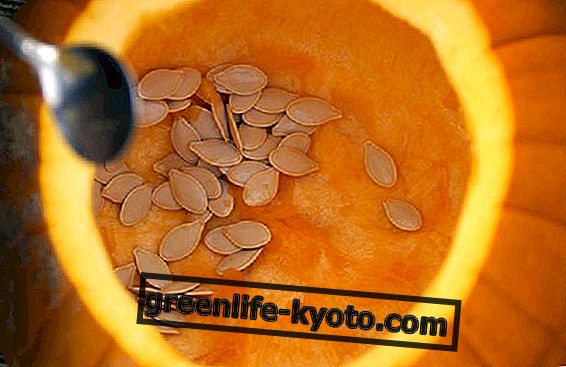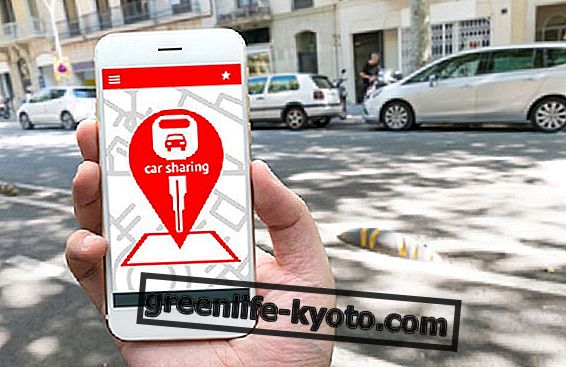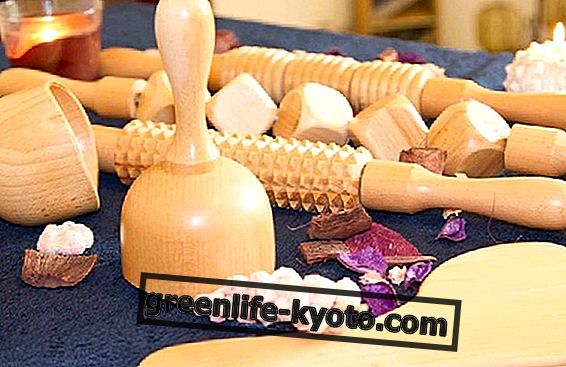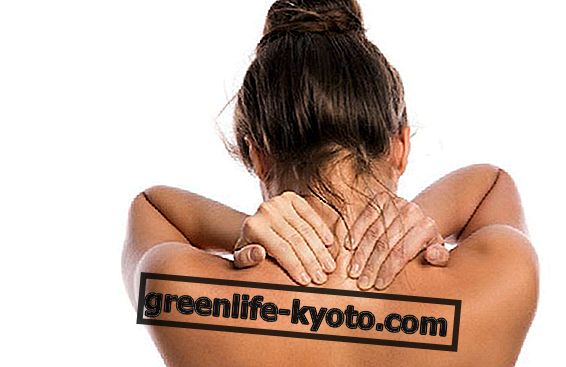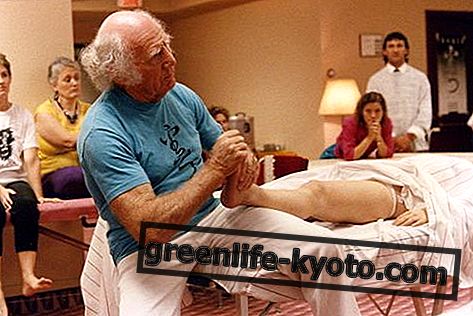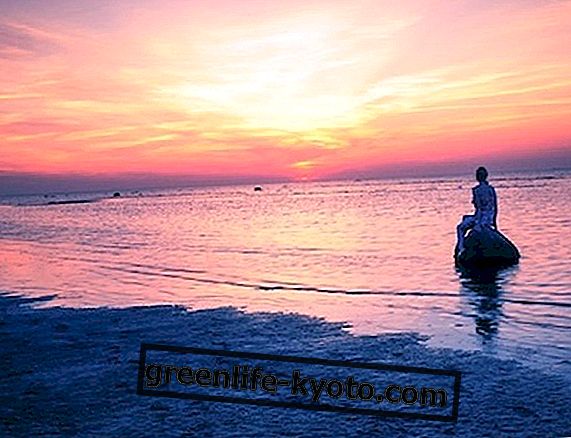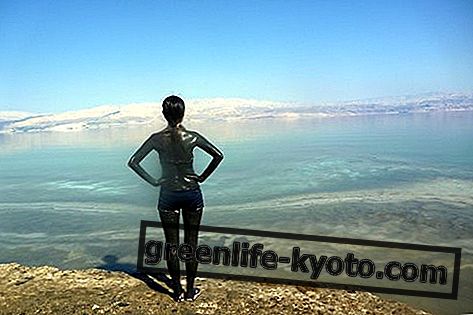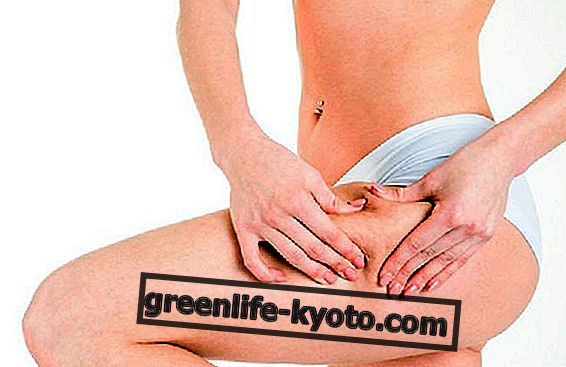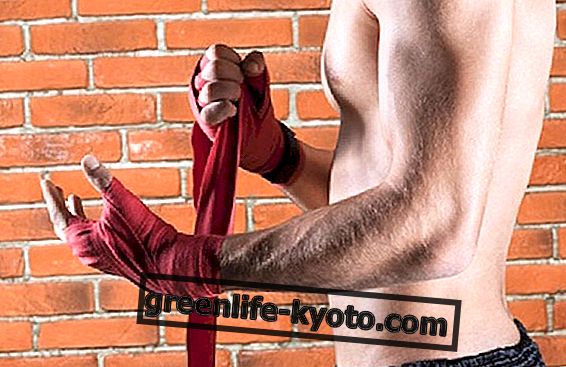
The different approaches of western medicine and holistic vision to back pain and the abdomen in traditional Chinese medicine as the center of emotional conflicts.
Comparing scientific and holistic approach
The official Western medicine recognizes various types of back pain . The scientific medical terminology defines lumbago as the muscular pain deriving from the lumbosacral area which, in some cases, reaches to radiate up to the thigh. We are faced with the "classic" lumbosciatalgia or inflammation of the sciatic nerve, pain that often prevents the person from walking.
The official medicine prescribes, in these cases, anti-inflammatory or painkiller drugs that relax the muscle bands thus restoring the patient's mobility.
Most of the time, the medical-scientific answers stop at a mechanistic view of health, aimed at solving the symptom as quickly as possible, but with a view of the disease "unrelated" to possible correlations or deeper causes that may have competition to its onset.
The structural weakening of the muscles and ligament bands that contain the intervertebral discs of the column causes, over time, the soft tissue to escape from the central pulpy nucleus of the discs, with the inevitable consequent pressure of the nerves that radiate from the vertebrae.
Protusions and herniated discs, which are also generated due to incorrect postures repeated over the years, cause excruciating pain in every unexpected movement, significantly reducing the level of well-being and autonomy of the person. The final solution, in these cases, is normally surgical.
From the holistic point of view, shared by hot stone operators and other bionatural disciplines, this interpretation of the disease has its limits: it does not solve the energetic-structural weakness that generated back pain (and in this case, the hernia), with time, protrusions will probably be reconstituted in other vertebrae.
It is as if, faced with the lighting of a warning light in the dashboard of the car, indicating the lack of oil, a plaster was applied to prevent the sight of the warning light; after a while the breaking of a part of the engine will be inevitable. And if, instead of inserting oil, we will simply replace the broken piece without giving too many precautions, a further failure will be certain.
The holistic view and traditional Chinese medicine
In traditional Chinese medicine (TCM), the basis of many holistic disciplines, such as the hot stone, the human being is considered as a whole, as an integral part of the universe, and containing within itself the entire universe. According to holism, even the smallest part contains all the elements of the whole.
It is the concept of "as above so below" by Hermes Trismegistus, the idea of the part that contains the whole. This means that, working on an area of the body, we can rebalance problems arising in areas of the body that are also distant from the direct field of intervention of the operator.
By intervening on the reflexes or on the opposing areas, we can therefore treat any disturbance, be it physical or psycho-energetic.
Heal your back from the abdomen
To treat states of energy weakness in the back we will intervene, in our hot stone treatment, before directly on the back, on the abdomen.
Effectively treating specific areas of the abdomen with manual massages and with the application of hot basaltic stones, we will rebalance the internal metabolism and the flow of energy (called "Ki") that flows in "meridians" (or channels) that cross the body. This will eliminate energy stagnation and deficiency states in the areas reflected on the back, which will thus remain strong, healthy and capable of supporting the "burdens" of life.
It goes without saying that, in the preventive phase, the more the abdominal muscles with exercises and massages will remain toned and efficient, the more the dorsal posterior bands will be supported.
The abdomen as a treasure chest for emotional conflicts
To rebalance the condition of the back, we will use a working method inspired by MTC (Traditional Chinese Medicine), and in particular by the diagnostic study of Masunaga (great shiatsu master Author Andrea Marini who lived in the twentieth century) who identified, on the abdomen different areas, each related to specific organs and energy "meridians" (eg Liver, Heart, Lung, etc.).
Once the area of the abdomen is found to be most lacking in energy, the operator can restore the balance through a targeted hot stone treatment, which also takes into account the holistic interpretative vision, for which certain areas are correlated to the diagnostic areas of the abdomen emotional-energetic emerged in the family-social context.
Below we provide the reader with a map of the abdomen. We would like to emphasize, as a great Shiatsu teacher said, that "The map is not the territory": the scheme represents only a frame of reference; the subjective conditions of the individual will certainly be considered.
As we can see in the map provided below, we imagine the abdomen as a pentagon whose point coincides with the area of the cardia or mouth of the stomach, whose sides run along the false ribs to end on the sides, whose other two sides descend until to the iliac crest, whose base follows a convex line towards the pubic hairline.
The area of the heart - the mother
At the apex of the pentagon we find the diagnostic zone correlated to the meridian of the Heart . On a family-emotional level this area is associated with the relationship that the children have with their Mother and that Mother has with her children.
The area of the Mother is related to nourishment (we think, first of all, of breast milk), not by chance in MTC the Heart meridian (Yin) has in the Small Intestine meridian its correspondent Yang, characterized by the function of absorbing, precisely, the nourishment. This area "speaks" to us about how nourishment (understood as material food but also as love) has been transmitted or received in the mother-child relationship. In the Eastern tradition, the Heart is also the seat of the Shen ("mind" in the highest and most spiritual sense, or rather awareness).
If the Shen is disturbed, and the meridian of the Heart is not in equilibrium, there is fear, insecurity, agitation, palpitation and, consequently, the energetic capacity of the corresponding meridian Yang Small Intestine is weakened. Stagnation may occur in the lower part of the abdomen, difficulty in absorbing the nutrients present in food, loose stools or constipation.
This energy weakness Heart-Small Intestine provokes, over time, the emotional conflicts have a reflection with the muscular bands in this specific case the abdominal area weakens forcing the ridges to "sustain" a greater load with inevitable relapse on the back. This initially causes lumbago and lumbosciatica and, subsequently, a situation of structural weakening of the ligaments of the vertebral column with protrusion of protrusions and hernias in the "fatal" lumbar vertebrae L3 or L4.
On the paravertebral vertebral column, on the sides of the V thoracic vertebra, we find the two Shu points of the Heart: on these we will work, in a prone position, applying hot stone stones, to rebalance the meridian and the relative emotional conflict at the origin of the imbalance.
The area of the small intestine - Right - Wrong and the nourishment of love
Going back slightly to the sides of the lower abdomen, near the iliac crests, going in the direction of the navel we find the area of the Small Intestine . Its function is to separate pure and useful nourishment from the impure organism, from an emotional point of view it can also be interpreted as the equanimous capacity to discern between right and wrong in everyday life.
The other interpretation also comes from the association with the area of the mother's heart but being in close contact with food we must consider nourishment not only from a physical point of view but also from an emotional one ("nourishment" of love), in terms of care and mutual sharing, in this area of the abdomen we can identify if there is correspondence and mutual satisfaction in a loving relationship that can be between partners, friends or mother-father and children.
On the paravertebral vertebral column, on the sides of the V lumbar vertebra and of the sacral foramen, we find the two Shu points of the small intestine.
The area of the Stomach - the Father
If we move from the mother's area to the left following the descending line of the last rib floating about two cm to the side, proceeding diagonally towards the center of the navel we find the area of the Stomach, correlated to the Father. The relationship with the Father is ancestral and brings us back to the Stone Age, when man went to the forest to procure food for women and children; the conflicts related to primary livelihoods are therefore related to this area. In our day, fatherly help is expressed in economic terms and as a protective role in the difficult moments of a child's life.
The figure of the Father is also linked to the Authority (employer, professors, teachers, elderly, etc.). The Stomach is in direct connection with the nervous system: a state of stress, tension and continuous worry causes the contraction of the diaphragmatic muscles, hinders a correct breathing and the mobility of the trunk, with the consequent stiffening of the abdominal area.
The abdominal diaphragm is a semi-rigid cartilaginous structure that moves with the correct breathing and muscle movement, in the West Author Andrea Marini lacking knowledge on complete breathing we induce a stiffening of the stomach area and of the diaphragm; this leads to a decrease in the elasticity of the antagonist muscles in the dorsal area corresponding to pain and tension in the area of the muscles and ligaments supporting the X-XII thoracic vertebrae and I lumbar (L1).
On the vertebral column paravertebral we find the two Shu points of the Stomach, on the sides of the XII thoracic vertebra: on these, as well as on the abdominal area, we will work in the prone position, applying the hot stone stones, to rebalance the meridian.
The area of the Spleen - Pancreas - The Capacity for Adaptation
In the area around the navel we find the area Spleen-Pancreas, Yin meridian "partner" of the corresponding meridian Yang Stomach . The Spleen-Pancreas oversees the distribution of nutrients. If we have enough food available but the food has not been "procured" or cooked with love, we will be able to suffer emotional conflicts (see, for example, excesses such as obesity or thinness or, more seriously, eating disorders such as bulimia or anorexia).
Spleen-Pancreas is also related to the energy capacity of adaptation and defense. Adaptogenic difficulties can be noticed in children towards whom excessively severe and harsh criteria have been applied, which are unloving, or on the contrary have found themselves obliged to deal with material problems far greater than themselves. All this is transformed, in the organism, into difficulties in the defensive system, for example in bone fragility, with frequent fractures due to the inability to "sustain" the loads and burdens of life. On the paravertebral vertebral column, on the sides of the XI-XII thoracic vertebra, we find the two Shu points of the Spleen: we will also work on these to rebalance the meridian and the relative emotional conflict.
The area of the biliary vesicle - self-esteem
If we descend from the cardia area to the right along the rib for two cm, going towards the navel in the soft area below the floating rib, we find the area of Vescicola Biliare . This area corresponds to the consideration we have of ourselves (self-esteem), depicted in the map as a "mirror" in which we reflect ourselves continually giving rewards or inflicting criticisms and judgments on ourselves. Often there is a big difference between what is reality and what we perceive of us; for example, I am very good at work, but when I reflect in my "psychic mirror" I don't appreciate it.
The term of judgment that I impose is subjective, and relative only to my perception. The meridian of Vescicola Biliare passes in the occipital band that from the hairline behind the ear goes towards the shoulders. Hard nodules or swellings in this area indicate an energy deficit in the functional metabolic capacity of Bladder bladder; if you do not run to the remedies, with time, the muscular fasciae of the neck will stiffen and you will have torticollis and possible protusions or hernias against the cervical vertebrae.
The neck and the nape are also connected to the pelvis: a stiffening at the top, with a semi-partial block of the neck, will force the pelvis to compensate for the imbalance. A treatment of redefining the posture must therefore be evaluated considering the distal areas of the neck-nape connected to the back-pelvis; in these cases it is recommended, in addition to the Hot Stone Massage treatment, to also take Yoga-Pilates lessons that re-harmonize the neck-back posture. On the paravertebral vertebral column, on the sides of the X-XI thoracic vertebra, we find the two Shu points of the biliary vesicle, on which we can place hot stone stones in a prone position.
The Liver Area - Judgment, Joy-Anger
Continuing for another 2 or 3 cm in a descending line along the false ribs on the right side of the abdomen and moving into the soft area in the direction of the navel, we find the area of the Liver, which corresponds to our perception of judgments, of criticisms and of the consideration that others communicate to us, whether they are work colleagues, neighbors, partners, friends, etc. This is not necessarily reflected in objective reality, but can be the fruit of our projections and fears.
Both areas, that of Biliary Bladder and Liver (respectively the meridian Yang and his "partner" Yin), are closely related to the emotion of joy but also of anger (think of the popular expression "eat the liver"). When the two meridians are out of balance, the person tends to lose the self-control of their emotions and is unable to maintain a lucid vision that allows them to correctly evaluate themselves and others.
On the paravertebral vertebral column, on the sides of the IX-X thoracic vertebra, we find the two Shu points of the Liver. The area of the Lungs - The loving exchange Author Andrea Marini Descending along both false ribs we arrive at the terminal angle of the ribs, as soon as the side begins, moving diagonally three centimeters towards the navel we find the area of the Lungs.
The area of the lungs is related to the exchange with others, to relationships, especially those of a couple. It is no coincidence that many ills of love, most often born of communication difficulties (hence problems of "exchange"), are often reflected in respiratory symptoms. The lung supervises the internal-external exchange, understood both at the physiological level (oxygen-carbon dioxide) and as an emotional and communicative exchange.
On an emotional-energetic level this can be reflected in the difficulty of finding a partner or in weaving an affectionate exchange with the other (brothers-sisters, friends, etc.). This imbalance affects all the dynamics linked to interchange (giving and receiving, giving and receiving, taking and leaving, etc.). In this sense, even being overly attached to objects or ideas can prevent change and create physical and energetic stagnation.
The corresponding Yang of the Lungs is the Large Intestine meridian, whose stagnation causes swelling and weight in the abdomen; also in this case the prolongation of this situation leads to a relaxation of the abdominal muscles, forcing the dorsal antagonist muscles to take charge of all the weight with a deficit for the whole back; in addition to the Hot Stone treatments, a postural balance with Hatha Yoga or Yoga-Pilates exercises is also effective. On the paravertebral vertebral column, on the sides of the III-IV thoracic vertebra, we find the two Shu points of the Lungs.
The area of the kidneys - the children
If we move to the flank in the softer area just before the iliac crest, we find the Kidney area . This area corresponds to the relationship with the children. It has to do with the energetic capacity to procreate, to give life, to support it for nine months, and until the child becomes an adult. The emotions and fears related to the impossibility of supporting the "loads" of Fathers or Mothers create an energetic weakness in this area and, consequently, at the physical level, problems affecting the spine.
The Chinese call the kidneys "The Palace of Life Force" and with this they mean, in addition to the reproductive capacity, also that of carrying on the commitments that life puts before us with rectitude and strength.
The emotion related to the kidneys is fear, and with it the impossibility of having the necessary strength to face difficulties with sufficient energy; his alter ego "courage" indicates an optimal state of energy of the kidneys. On the paravertebral vertebral column, on the sides of the II-III lumbar vertebra, we find the two Shu points of the Kidneys. Here we will go to work in the event of an imbalance emerging from the kidneys.
Aphrodisiac disease: what correlation?
The area of Urinary bladder - Sex life
The area immediately above the pubis corresponds to the area of Bladder Urinary, a Yang counterpart of the Yin meridian meridian . In this area, aspects related to the genital organs and the ability to live a satisfying sex life are concentrated.
In today's Western society many of the daily frustrations and dissatisfactions are conveyed on polygamous-type sexual habits, this attitude generates feelings of guilt that are reflected in the support capacity of the lumbo-sacral muscle bands, this emotional-energy conflicts are added to the rigidity due to poor posture and lack of elasticity; giving rise to all the problems of protusions and increasingly frequent hernias in the lumbosacral area. The location in the dorsal area of the bladder corresponds to the second sacral foramen.
The area of the Triple Heater - The distribution of energy
The Triple Heater is a purely energetic meridian, which is not reflected in a real organ. With its three "boilers" (hence the name) it supervises the energetic transformation of air, food, liquids and even thoughts and subsequently distributes them to the various parts of the body.
A dysfunction related to the relationship with oneself and with parents in childhood, in particular not feeling in the right place and not protected creates a bad distribution of energy in the body, the consequence is metabolic irregularity in the management of heat by the organs. On the physical plane, this inability to conduct energy in the various areas of the body results in cold hands and feet, poor circulation and excessive tingling of the limbs.
Exhaustion and lack of energy can also be linked to a bad transformation and lack of energy distribution of this energy organ and its corresponding meridian.
On the paravertebral vertebral column, on the sides of the I-II lumbar vertebra, we find the two Shu points of the Triple, on which we can work with the hot stone or for example but not exhaustive with Shiatsu pressures.
The area of the Master of the Heart - The Inner Master
The diagnostic area of the Mastro del Cuore meridian is located between the navel and the zone of the heart and corresponds to the pericardium, the membrane that protects the heart. Its function is therefore containing and "protective"; transposed to an energetic and psychological level, and framed in the holistic interpretative vision, an imbalance in this area may indicate either excessive protection of parents towards their children or, vice versa, a lack of protection against them.
In the first case these will not develop sufficient autonomy in life, with difficulty in facing difficult situations relying on their own strengths. In infancy, insufficient protection will, on the contrary, result in the propensity to assume roles that do not belong to the child, but which should be for adults.
On an energetic and physical level, in both cases, both for Mastro del Cuore and for Triple Heater, there will be, in the event of an imbalance, a dispersion of energy with consequent deficiency precisely in the support area of the last lumbar vertebrae, with probable protusions or hernias. On the paravertebral vertebral column, IV-V thoracic vertebra, in the intrascapular area, we find the two points Mastro del Cuore, on which we can work with basaltic stones during treatment, in a prone position. For further information on the possible applications of energy rebalancing of the various areas.



